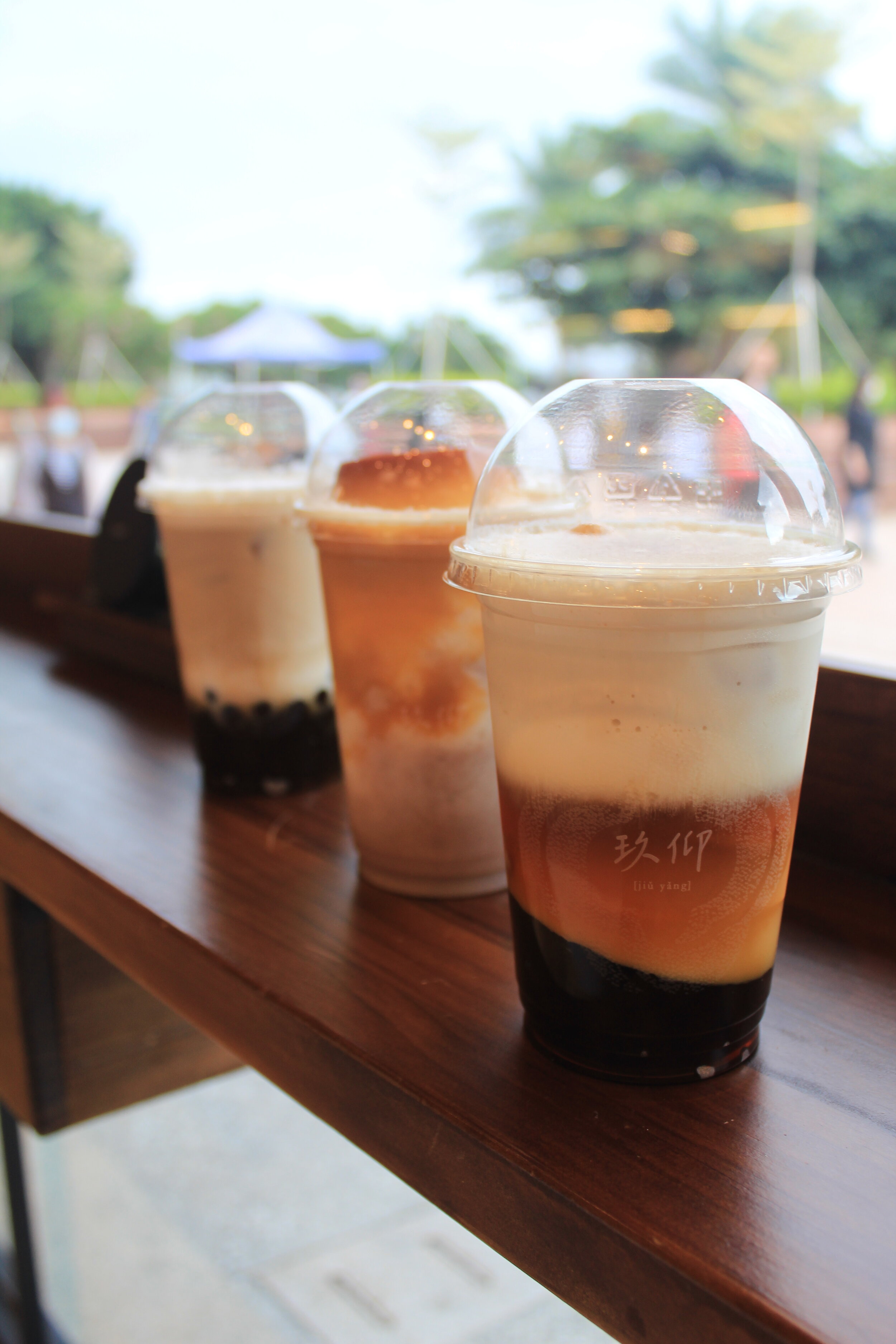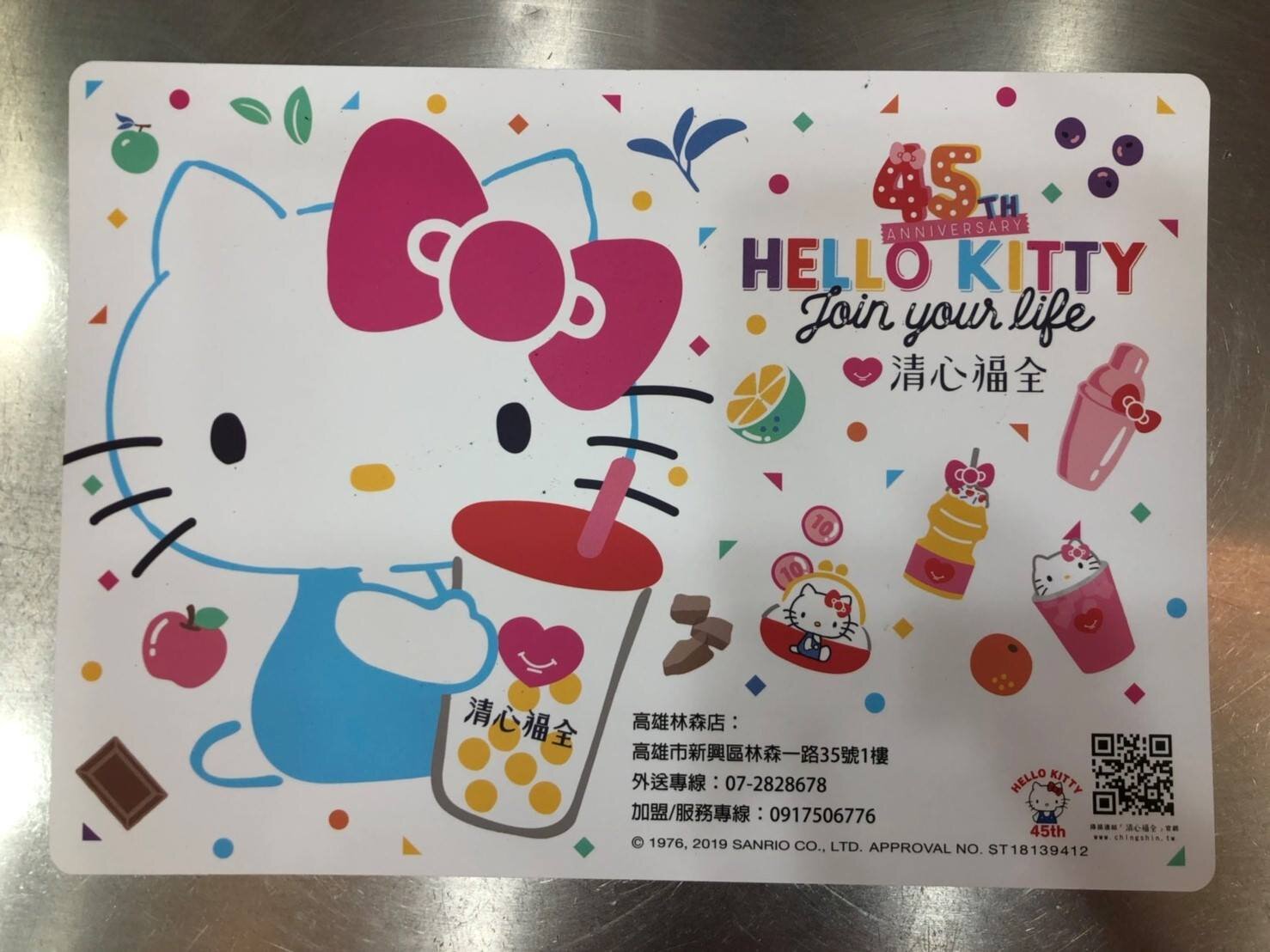How I Learned Chinese By Ordering Bubble Tea (Boba) in Taiwan
Hello friends! Happy New Year’s! It seems crazy that we’re already in 2021. I remember ringing in the New Year with some of my best friends back in Los Angeles, thinking about what’s in store for the upcoming year. Little did we all know… that I wouldn’t be able to see them until 2021. I miss you guys!
Growing up in Los Angeles, specifically the San Gabriel Valley area (626!), I was exposed to boba from a very young age. I remember going to the San Gabriel Superstore for groceries, browsing the stationery section for the newest Hello Kitty pens, looking at the sparkly hair clips, and then leaving with a green apple boba slushy in hand. (I really don’t know why I kept choosing this because the tapioca pearls got hard so quickly) But it was a ritual of sorts, one that became something I looked forward to as I tagged along with my mom to this emporium of Asian goodies. As I got older, I hung out at Half & Half in Monterey Park, trying the different ice milk drinks with pudding, hot brown sugar boba, and a variety of other flavors. On busier days, I stopped by Tea Station in Alhambra and grabbed a large tapioca milk tea or green milk tea to go, while collecting stamps on my rewards card in anticipation of a free drink in the future.
Visited a cute boba shop in Danshui / Tamsui and the nice laoban boss man gifted me with two pudding bobas in addition to my original order of oolong boba milk tea in the back! Thank you!
When I moved to New York, and later Florida, boba became less available (and more expensive), and I started to wonder how hard it was to make myself, what the origin of the drink was, and how I could learn more about it. After visiting Taiwan for the first time when studying abroad at NYU Shanghai, I tried Chun Shui Tang (3x in a week) aka the creator of bubble tea. After moving here in 2017, I’ve become familiar with a huge variety of boba tea brands, the intricacies of tea plantations and types of teas, the history, and the origin and process of making bubble tea.
In 2017, I moved to study Mandarin at National Taiwan University at the International Chinese Language Program (a separate blog post on this experience to come later). I moved into a small shared co-living apartment with 9 Floor 玖樓 near NTU, taped every single menu for every boba store within a 10 minute walking distance on my wall, and set out to translate everything that I didn’t already know. I moved here not knowing how to say more than “how much is that” 多少錢 in Mandarin, so I pretty much translated the entire menu character by character. It was important, okay! I realized that if I wanted to try different types of boba and not look silly, I needed to know what the menus said (and also the seasonal varieties, specials and toppings that changed frequently). At one point, my roommates came in and laughed at my wall because they weren’t sure if I was studying my textbooks or studying the menus on my wall. (I mean… sometimes dreaming about boba helped me study for my 聽寫 dictation quiz the next day)
As I learned how to say the different sizes, sugar levels and ice levels, things came a lot easier. I realized that it was the speediness and convenience of bubble tea shops here that really made it easy to get a quick sugar fix, an afternoon reprieve from the daily mundane routine. I used to get funny looks in Shanghai when I ordered in Mandarin with my extremely obvious American accent. The pressure! The lights! The options! So many colors, pictures, scents, flavors. People behind me! The busy workers! Really, the only option was to memorize the entire menu in advance and to prepare my order before getting to the front of the line.
As I studied the menus taped to my wall in my room, I was overwhelmed by the number of options, especially for those who aren’t able to read Chinese characters. This guide is dedicated to my dad, who is hopeful that he is able to order on his own next time without my help. (I’m including a menu from 清心福全, a Taiwanese chain that often has cute character collaborations (but imho isn’t that great drink-wise) that I’ve kept because it was too cute - these specific images are from a Kaohsiung store that I found online) Let’s dive in!
What type of tea do you want?
You have a few staple options here that can be found on most menus in Taiwan. I recommend memorizing at least these characters so you can recognize the general type of tea, so you can order most drinks in the future. If you find yourself only drinking one type like green tea, then just memorize 綠茶 and you’ll find things a lot easier when you can recognize at least those two characters. Honestly, not fun but rote memorization is the way to go here. I wrote characters over and over again (more than 100 times per character) in order to recognize them in all of their glory.
Original pearl milk tea 珍珠奶茶 zhen zhu nai cha
Black tea 紅茶 hong cha
Green tea 綠茶 lu cha
Oolong tea 烏龍茶 wulong cha
Jasmine green tea 茉莉綠茶 moli lucha
Milk tea 奶茶 nai cha
Wintermelon tea 冬瓜茶 dong gua cha
Matcha 抹茶 mo cha
Four Seasons Oolong 四季春烏龍 sijichun wulong
High Mountain Oolong 高山烏龍 gaoshan wulong
Pu’er Tea 普洱茶 puer cha
In this menu on the right hand side, there are a lot more descriptive words, so you can just break it down as follows:
四季 siji - four seasons (oolong)
綠茶 lucha - special green tea
烏龍綠茶 wulong lucha - oolong green tea
翡翠烏龍 feicui wulong - feicui Oolong (a name)
極品菁茶 ji pin jing cha - luxurious tea
紅茶 hong cha - black tea
高山茶 gao shan cha - high mountain oolong tea
普洱茶 pu’er cha - pu’er tea
2. Do you want milk or creamer?
Usually any of the tea options can be converted into milk tea with either fresh milk or creamer. Fresh milk is more expensive usually but a healthier option. Menus these days often have a fresh milk section or the staff will ask you directly if you want fresh milk or creamer.
Fresh milk 鮮奶 xian nai
Creamer 奶精 nai jing
If you want a green milk tea with fresh milk, you can say “鮮奶綠茶" xian nai lu cha. On this menu, there are a few fresh milk options listed at the very top.
In the red box it says “Fresh milk/latte series” - I’ll list some of the more popular options.
鮮奶茶 xiannai cha - fresh milk tea
珍珠鮮奶茶 zhenzhu xiannai cha - fresh milk tea with pearls
粉圓鮮奶茶 fenyuan xiannai cha - fresh milk tea with small pearls
可可拿鐵 keke natie - cocoa latte
鮮奶冬瓜 xiannai donggua - fresh wintermelon milk tea
咖啡拿鐵 kafei natie - coffee latte
珍珠芝麻拿鐵 zhenzhu zhima natie - sesame latte with pearls
濃請巧克力拿鐵 nongqing qiaokeli natie - chocolate latte
珍珠蜂蜜鮮奶普洱 zhenzhu fengmi xiannai puer - Honey milk pu’er with pearls
Milk tea (creamer) series
奶茶 nai hong - black milk tea (original milk tea)
奶綠 nai lu - green milk tea
烏龍奶茶 wulong nai cha - oolong milk tea
珍珠奶茶 zhen zhu nai cha - original pearl milk tea
粉圓奶茶 fen yuan nai cha - small pearl milk tea
仙草東奶茶 xian cao dong nai cha - grass jelly milk tea
布丁奶茶 bu ding nai cha - pudding milk tea
椰果奶茶 ye guo nai cha - coconut jelly milk tea
蜂蜜奶茶 feng mi nai cha - honey milk tea
暗黑水晶奶茶 an hei shui jing nai cha - coffee jelly milk tea
3. What toppings or add-ins would you like? 加料
If you didn’t already choose a drink with toppings, most drinks are customizable and you can add pearls (zhenzhu 珍珠), coconut jelly (yeguo 椰果), my favorite aiyu jelly (aiyu 愛玉) or tea jelly (cha dong 茶凍) which is so yummy. Some shops allow you to choose between white or black pearls, small pearls (fenyuan 粉圓) or big pearls. There is a more common option these days of adding cheese foam, which is so good on top of black or green tea and creates a delicious salty layer of complexity. It’s usually called nai gai 奶蓋 ie: milk cap. Usually the toppings section is on the very bottom of the menu and is approximately 5-10 NT (15 - 35 cents usd) on top of the drink price.
In this photo below, the first two rows are asking about ice and sugar levels, which you will always be asked about whenever you order a hand-shaken drink (手搖飲料 shou yao yinliao) in Taiwan.
4. Ice, ice, sugar, baby! Customize your drink’s sweetness & ice level
It’s time for the somewhat trickier Chinese part! After you order your drink with toppings, they’ll ask you 「甜度冰塊呢」 tiandu bingkuai ne - meaning what sweetness level and how much ice would you like? To this you can reply with one of the below from each section:
Ice level:
regular (zhengchang bing)
less ice (shao bing or 7 fen bing - 70% ice)
least amount of ice (wei bing or san fen bing)
no ice (qu bing)
Hot drink only
regular (chang wen)
warm (wen yin)
hot (re yin)
Sugar level:
regular (quan tang or zhengchang - 100%)
less sugar (shao tang - 80%)
half sugar (ban tang - 50%)
least amount of sugar (wei tang - 20%)
no sugar (wu tang - 0%)
5. Let’s order!
Thirsty yet? Time to put everything together!
For example, if you wanted a regular boba milk tea with less ice and 50% sugar, you would structure the sentence like this:
我要一杯珍珠奶茶 冰的 少冰 半糖 wo yao yi bei(i want one cup) zhenzhu naicha(tea type), bing de(hot or cold), shao bing(ice level), ban tang(sugar level)
If you wanted two cups of hot green tea with no sugar, you can say:
我要兩杯綠茶 熱的 無糖 wo yao liang bei (2 cups) lucha (green tea) re de (hot) wu tang (no sugar)
One of the first photos taken of me by NTU when I first got here - I inadvertently matched my fruit tea from Yi Fang to my dress :)








